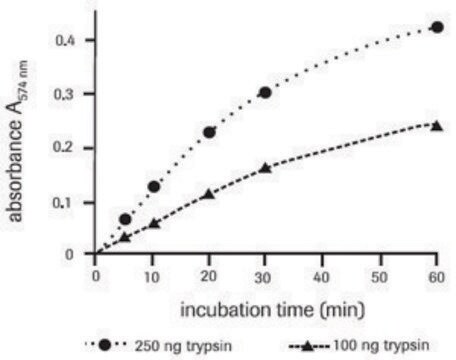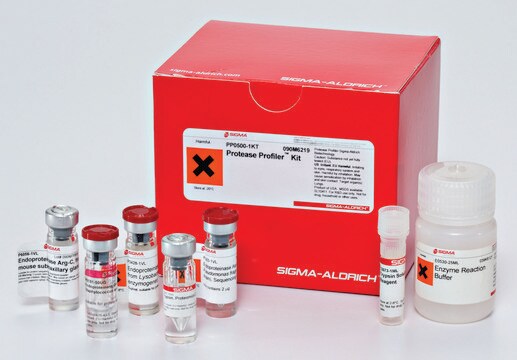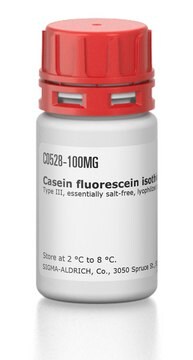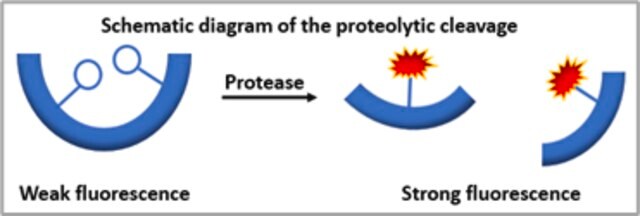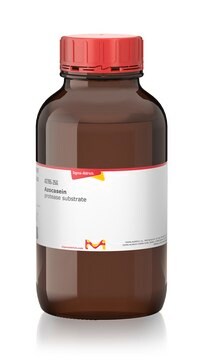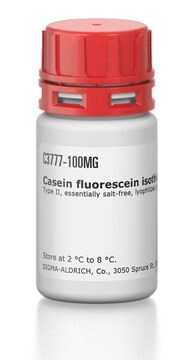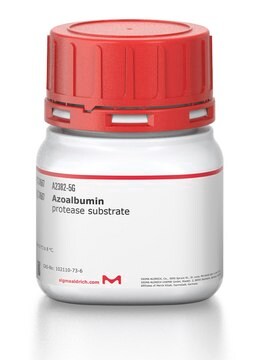PF0100
Protease Fluorescent Detection Kit
high sensitivity assay
Sinonimo/i:
Protease Assay Kit
About This Item
Prodotti consigliati
Condizioni di spedizione
dry ice
Temperatura di conservazione
−20°C
Applicazioni
- in the detection of proteolytic activity using casein based protease assay
- for testing the extracellular proteolytic activity of fungal strains
- for quantifying mitochondrial protease activity
- for measuring the protease production from soil solution
Compatibilità
Quantità
The trichloroacetic acid (TCA) component is provided as 6.1 N TCA solution. 0.6 N TCA Solutions may be prepared by a 10-fold dilution of the desired volume of T0699 with ultrapure water. It is not necessary to dilute the entire volume of T0699 for immediate use of the kit.
Risultati analitici
Solo come componenti del kit
- Incubation buffer 25 mL
- FITC-casein solution 5 mL
- Assay buffer 200 mL
- Protease standard (trypsin) 20 μg
- FITC control 50 mg
- Trichloroacetic acid (TCA) solution 30 mL
Avvertenze
Danger
Indicazioni di pericolo
Classi di pericolo
Aquatic Acute 1 - Aquatic Chronic 1 - Eye Dam. 1 - Resp. Sens. 1 - Skin Corr. 1A - Skin Sens. 1 - STOT SE 3
Organi bersaglio
Respiratory system
Codice della classe di stoccaggio
8A - Combustible corrosive hazardous materials
Punto d’infiammabilità (°F)
Not applicable
Punto d’infiammabilità (°C)
Not applicable
Scegli una delle versioni più recenti:
Possiedi già questo prodotto?
I documenti relativi ai prodotti acquistati recentemente sono disponibili nell’Archivio dei documenti.
I clienti hanno visto anche
Protocolli
The Protease Fluorescent Detection Kit provides ready-to-use reagents for detecting the presence of protease activity. This simple assay to detect protease activity uses casein labeled with fluorescein isothiocyanate (FITC) as the substrate.
Il team dei nostri ricercatori vanta grande esperienza in tutte le aree della ricerca quali Life Science, scienza dei materiali, sintesi chimica, cromatografia, discipline analitiche, ecc..
Contatta l'Assistenza Tecnica.
